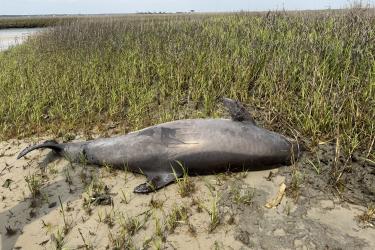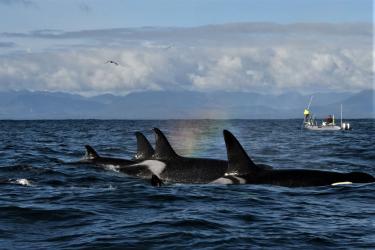Last summer, a team of researchers from NOAA’s Alaska Fisheries Science Center lowered a 3D camera into Pribilof Canyon in the Bering Sea—one of the largest undersea canyons in the world. Scientists used the camera to map deep-water coral habitats that until then had been mostly unexplored.
That expedition is a reminder that we are still in an age of discovery. But we weren’t there just to explore. Fishery managers are considering whether to protect these sensitive habitats, and NOAA Fisheries is providing the robust, science-based advice they need to make a wise decision.
This is true of all our science—it is designed to provide scientific answers to real-world questions about how to manage our living marine resources.
When it comes to fisheries, the law requires us to manage fish stocks sustainably. We were assigned that mission when Congress passed the Magnuson-Stevens Fishery Conservation and Management Act (MSA) 40 years ago this April. And while that law is rightly celebrated this year for enabling us to achieve sustainable fisheries, it also has yielded a less obvious benefit. Fisheries science has made tremendous advances over the past several decades, in part because that law was—and is—pressing us to advance our methods and technology.
The MSA, along with the Endangered Species Act and the Marine Mammal Protection Act, has propelled us forward by requiring us to achieve things that were beyond our capabilities at the time. For example, the 2006 amendments to the MSA required us to provide scientific advice for all federally managed stocks. But we did not have sufficient data for many stocks, and many could not be readily assessed because they live in hard-to-sample habitats.
But the scientific community rose to the challenge. We developed new statistical methods for assessing data-poor stocks such as reef fishes in the Western Pacific. We also developed new remote sensing technologies using advanced optical and acoustic sensors, which we could send out on ships, buoys, gliders, and robotic vehicles. This extends the reach of our surveys and allows us to collect data on fish that were, until recently, beyond the reach of our science.
These advances make science-based fishery management possible. The result: we have ended chronic overfishing, rebuilt 37 stocks of fish, and put our fisheries on a solid sustainable footing.
But even as we look back on 40 years of evolving science, the oceans are changing, and our science must continue to grow. Climate change in particular threatens the health of our fisheries, and we must continue to develop our ocean sensing systems so that we have more early warning of changing environmental conditions.
Some examples. In the Gulf of Maine we have put hydrophones on autonomous gliders and sent them out to listen for the noise made by spawning cod. This will help us locate and protect cod spawning grounds. In Alaska, we put cameras into research trawls to identify, count, and measure fish as they pass through the net, without having to bring the fish on deck. And we are researching environmental DNA technology that will one day allow us to collect a water sample and determine, by the DNA left behind, which animals have been present in an area.
These examples provide information about the wider environment in which fish live. And this is the kind of information we need to take environmental and ecological conditions into account when managing fisheries. This approach—Ecosystem-based Fishery Management—will be vital when managing fisheries in a changing climate.
Forty years after the passage of the MSA, we have developed—along with our research partners, and with the support of U.S. taxpayers—a scientific and management infrastructure that makes us a world leader in sustainable fisheries management. We must continue to base our decisions in sound science, and to advance that science as we confront climate change and other challenges ahead. The MSA, by requiring science-based management, will continue to propel fisheries science into the future.
Richard L. Merrick


